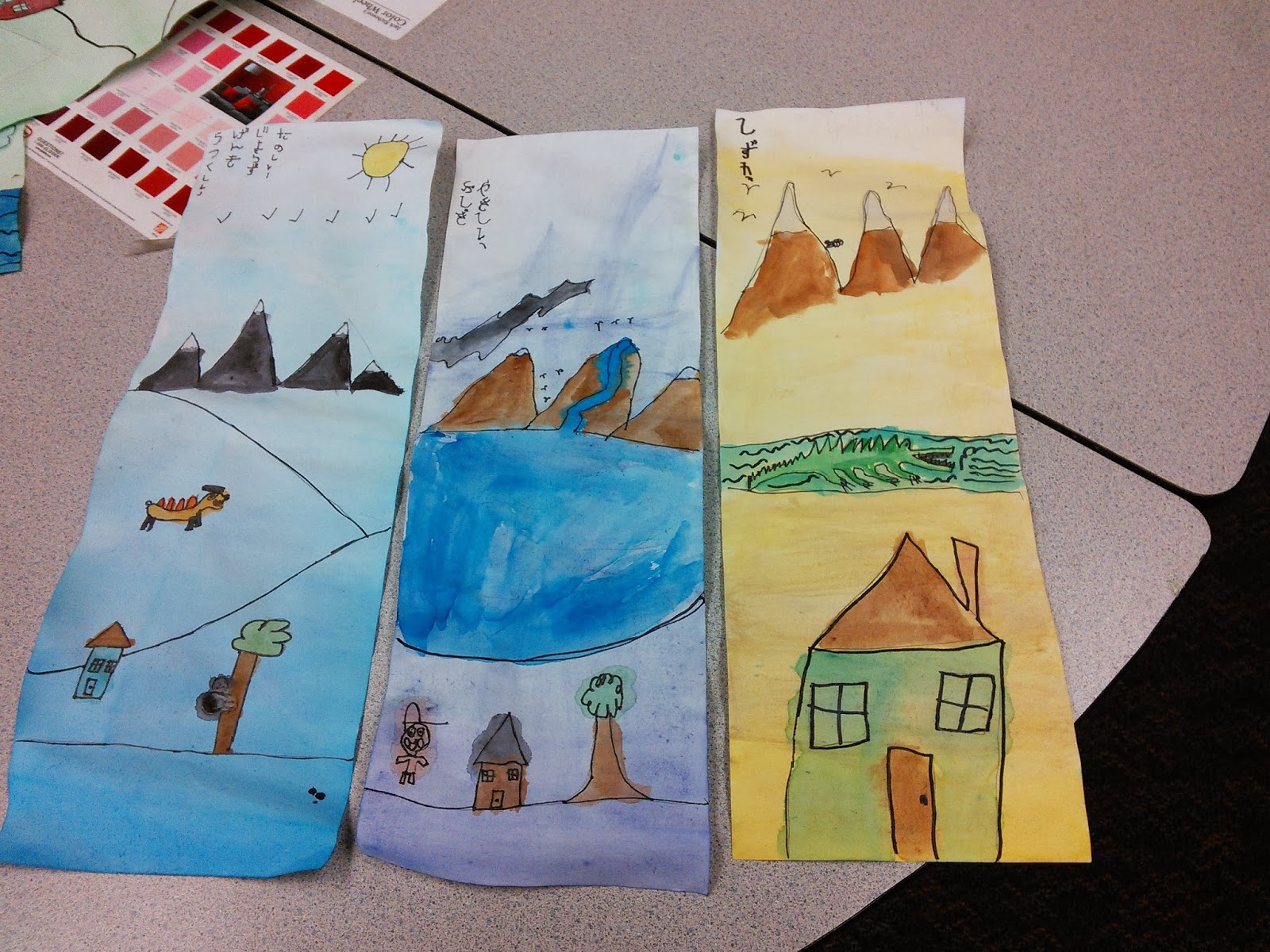 |
| Finished Scarab necklace |
Today I went back to S. Elementary, after going to J. Elementary for the past few weeks. The 2nd graders are currently working on scarab pendants made of clay in their Egyptian Art unit. Previously, they had etched their design onto the clay, and it had been fired and glazed a blue color. Today they were putting their necklaces together. Mrs. M briefly reviewed with the students what the Scarab god was known for in Egyptian mythology. The students remembered learning that the Egyptians believed that he made the sun rise. After the review, Mrs. M gave a short demonstration on how to tie the pendant on the string. Students were then given 10 pairs of beads to make their necklaces with. I passed out the pendants to the students, and once they received their pendants and beads, they got straight to work. The students really enjoy this project, and the fact that they can wear their project is very exciting for them. After they finished making their necklaces, students sketched or colored in their sketchbooks until the class period was up.
Before the next grade (4th) came in, Mrs. M told me that play-acting with the students is a good teaching technique in terms of behavior, as it stimulates and engages them in what they are learning. Mrs. M gave the "Sally Sassy, Sally Sweet" example, where she shows negative behavior, and then shows good behavior to the students, and they correct her on the negative behavior. This reinforces what good behavior and bad behavior look like in the classroom, and how they are expected to act.
A few minutes before the 4th grade class came in, two students with disabilities came in and were given a specialized demonstration of the project they would be working on. After she finished, the rest of the class came in. 4th grade continued working on space landscapes today. They had cut out circles of paper and colored them in, which acted as their planets. Today, they ripped up the painted paper left over from the circle cutouts to create the landscape. After ripping, the students used charcoal to add value to the landscape. Most of the class period, I helped a student with cerebral palsy rip the paper to create a landscape. I would ask her where she wanted the pieces, as I held them up to the black paper in different areas, and she would respond with a noise and a smile when I placed it where she wanted it. Then I helped her to shade in her planets with charcoal. This was very difficult, as she cannot grasp things too well, and, besides making noises, she cannot communicate. I had to try to decipher her facial expressions to understand what she wanted. She seemed upset when I tried to help her shade in the planets with charcoal. I found out later that she does not like to get her hands dirty, so I would wipe down her hands with a wet rag after shading.
 |
| Stone painting |
3rd grade is learning about canopic jars in their Egyptian art unit, which they will be making out of paper. Mrs. M began the class with a demonstration on how to create a stone-looking texture on paper by dabbing a sponge in black, brown, and white paint and then dabbing it on the piece of paper. These colors combined together made a stone-like appearance. During the demonstration, Mrs. M asked the students questions about what they had learned previously about canopic jars and their functions. I was surprised with how much the students had retained from the previous lesson, as they were able to tell her what they were used for in various circumstances. After the demonstration, my partner and I handed out the paper the students would be sponging on, and Mrs. M handed out plates with the paint. The students got right to work, and I was surprised with how quiet they were today. I noticed some of the students were dabbing on the paper in the same direction, so I told them that they should alter the directions in which they sponge to create a more textured appearance. After class, the students picked up and washed up, and waited for Mrs. M to line them up. She reviewed what the had learned about canopic jars by table, and when each table gave her a correct answer, she would allow them to line up at the door.
5th grade came in shortly after 3rd grade left, and were watching a movie on mummies today. Mrs. M told them that they needed to take notes in their sketchbooks, as they would be using their notes to help them on the next project. She told them what they needed to look for and pay close attention to in order to take accurate notes. My partner and I did not stay more than 10 minutes after 5th grade came in, as we have been staying 3 hours at a time.
Before we left, Mrs. M brought out the students' finished Japanese scroll paintings from J. Elementary. She said that the students had really enjoyed the project, particularly when it came to writing in Japanese. Some of the projects turned out really nice. Overall, I'm glad they enjoyed the project.























